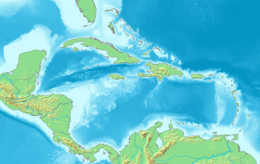
Gran Canaria, also Grand Canary Island, is the third-largest and second-most-populous island of the Canary Islands, an archipelago off the Atlantic coast of Northwest Africa and is part of Spain. As of 2019 the island had a population of 851,231 that constitutes approximately 40% of the population of the archipelago. Las Palmas de Gran Canaria, the capital of the island, is the biggest city of the Canary Islands and the ninth of Spain.
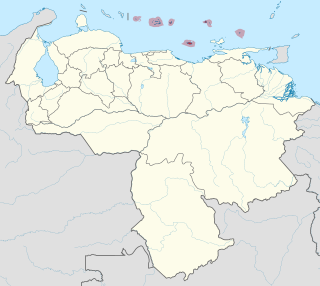
The Federal Dependencies of Venezuela encompass most of Venezuela's offshore islands in the Caribbean Sea and the Gulf of Venezuela, excluding those islands that form the State of Nueva Esparta and some Caribbean coastal islands that are integrated with nearby states. These islands, with a total area of 342 square kilometres, are sparsely populated – according to the preliminary results of the 2011 Census only 2,155 people live there permanently, with another hundred from Margarita Island who live there seasonally to engage in fishing. Local government is officially under the authority of Central government in Caracas, although de facto power is often held by the heads of the sparse and somewhat isolated communities that decorate the territories.

La Orchila Island is an island and a military base off the coast of Venezuela, north of Caracas. It has numerous beaches, including one where the sand is markedly pink.

The Los Roques Archipelago is a federal dependency of Venezuela consisting of approximately 350 islands, cays, and islets in a total area of 40.61 square kilometers. The archipelago is located 128 kilometers (80 mi) directly north of the port of La Guaira, in the Caribbean Sea.

La Tortuga Island is an uninhabited island of Venezuela, the largest in the Federal Dependencies of Venezuela. It is part of a group of islands that include the Tortuguillos and Cayo Herradura. Isla La Tortuga has an area of 156 km2 (60 sq mi).
Canarreos Archipelago is an archipelago of Cuba.
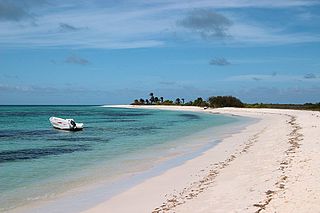
The Las Aves Archipelago is a pristine archipelago in the Caribbean Sea, and is part of the Federal Dependencies of Venezuela. It is located north of the Venezuelan states of Aragua and Carabobo, between the Dutch island Bonaire in the west, and the Los Roques Archipelago in the east, at 12°00′N67°40′W. The prime economic importance of the islands lies in fishing. "Las Aves" translates to "The Birds" in English.
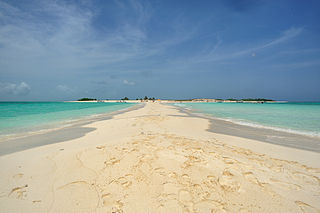
The Insular Region is one of the eight natural regions of Venezuela and one of the 10 administrative regions in which Venezuela was divided for its development plans; it comprises all of the nation's islands, and is formed by the state of Nueva Esparta and the Federal Dependencies.

Cay Sal Bank is the third largest and the westernmost of the Bahama Banks. It is located between 23º27'N - 24º10'N and 079º25'W – 080º35'W. In a geographical sense, it is separate from the Bahamas proper as it is much closer to Cuba than to the closest Bahamian island. It is separated by Santaren Channel from the Great Bahama Bank, the western rim of which is 50 km (31 mi) to the east. The Straits of Florida separate it from the United States mainland and the Florida Keys.
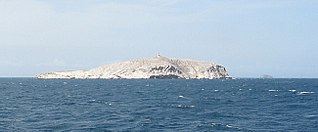
The Los Monjes islands is a federal dependency of Venezuela are located to the northwest 80 kilometres of the Gulf of Venezuela, 34.8 kilometres off the coast of Guajira Peninsula at the border between Colombia and the Venezuelan state of Zulia.
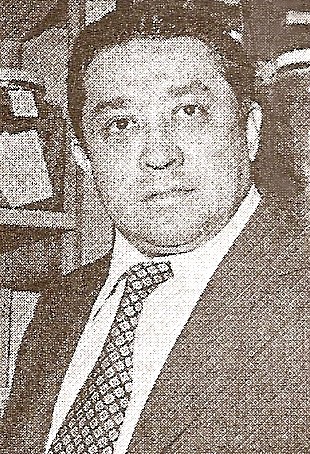
Francisco Mago Leccia (“Mago”) was born in Tumeremo, Bolívar State, Venezuela on May 21, 1931 and died in Puerto La Cruz, Anzoátegui State, Venezuela on February 27, 2004. Mago was a distinguished Venezuelan ichthyologist who specialized in electric fish of the rivers and lagoons of South America, particularly of Venezuela. His education was Docent in Biology and Chemistry graduate from the “Instituto Pedagógico de Caracas”,, Master of Sciences from the University of Miami, Florida, U.S.A., Doctor in Sciences from Universidad Central de Venezuela. His Doctoral Thesis was entitled: “Los peces Gymnotiformes de Venezuela: un estudio preliminar para la revisión del grupo en la América del Sur”.
La Sola Island is a small island in the southeastern Caribbean Sea. The island is a part of the Dependencias Federales of Venezuela.

Gran Roque is an island, one of the federal dependencies of Venezuela, located in the southeastern Caribbean Sea in the archipelago of Los Roques, which has 1.7 km2 in extent, where the majority of the population lives. The airport is located by the sea, a few meters from the beach.
Francisco Antonio De Venanzi was a Venezuelan doctor, scientist and academic. He was rector of the Universidad Central de Venezuela from 1959 to 1963. His biography was published as volume 51 of the Biblioteca Biográfica Venezolana.

The Elbow Cays are uninhabited cays in the Cay Sal Bank, Bahamas. It is the most Western point in the Bahamas. They are part of a reef shelf located at the northwestern end of the bank about 80 km (50 mi) off the Cuban coast and 130 km (80 mi) southeast of Key West, Florida. These cays are an excellent scuba diving spot.

The Cayos Francisquí also known as Cayos Franciskí, is the name of a group of Caribbean cays that form part of the Los Roques Archipelago National Park in northern Venezuela. Administratively, as part of the Los Roques Archipelago, they belong to the Francisco de Miranda Island Territory.

The Oceanographic Institute of Venezuela is an academic and research institution within the Universidad de Oriente which specializes in applied research and teaching in the fields of marine biology, oceanography and fisheries science.

Cayo de Agua is the name of an island in the eastern Caribbean Sea that geographically belongs to the Los Roques Archipelago and is administratively organized as part of the Federal Dependencies, Venezuela, in addition to being part of the National Park of the same name and the Miranda Island Territory, the name of this key has its origin in the fact that it has freshwater wells within it.

Madrisquí is a small island that belongs to the Archipelago of Los Roques, which is administratively part of the Federal Dependencies and is under the authority of the Miranda Island Territory in the waters of the Caribbean Sea of Venezuela. Is part of the tourist or recreational area of the park, is linked to Cayo Pirata through a narrow sand barrier. It has an area of 18.85 hectares.

Cayos Bequevé is the name given to a group of Venezuelan islands in the southeast of the Caribbean Sea that is part of the Los Roques Archipelago, and of the Lesser Antilles that is administered as part of the Federal Dependencies of Venezuela and the National Park Archipelago of Los Roques, and is also part of the so-called Miranda Island Territory. Not to be confused with an inn of the same name but located on the island of Gran Roque.


